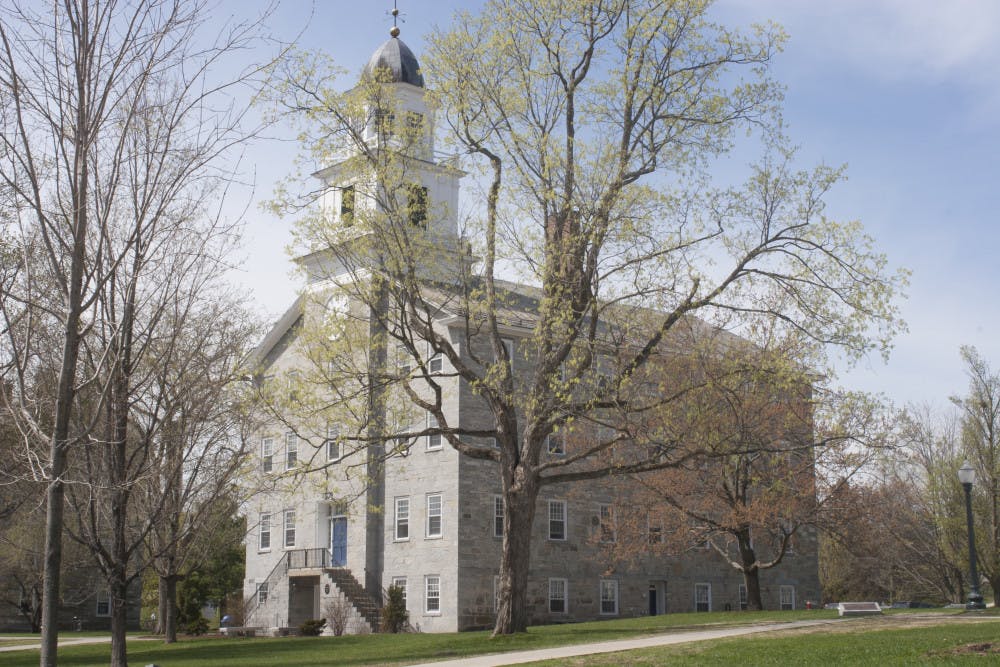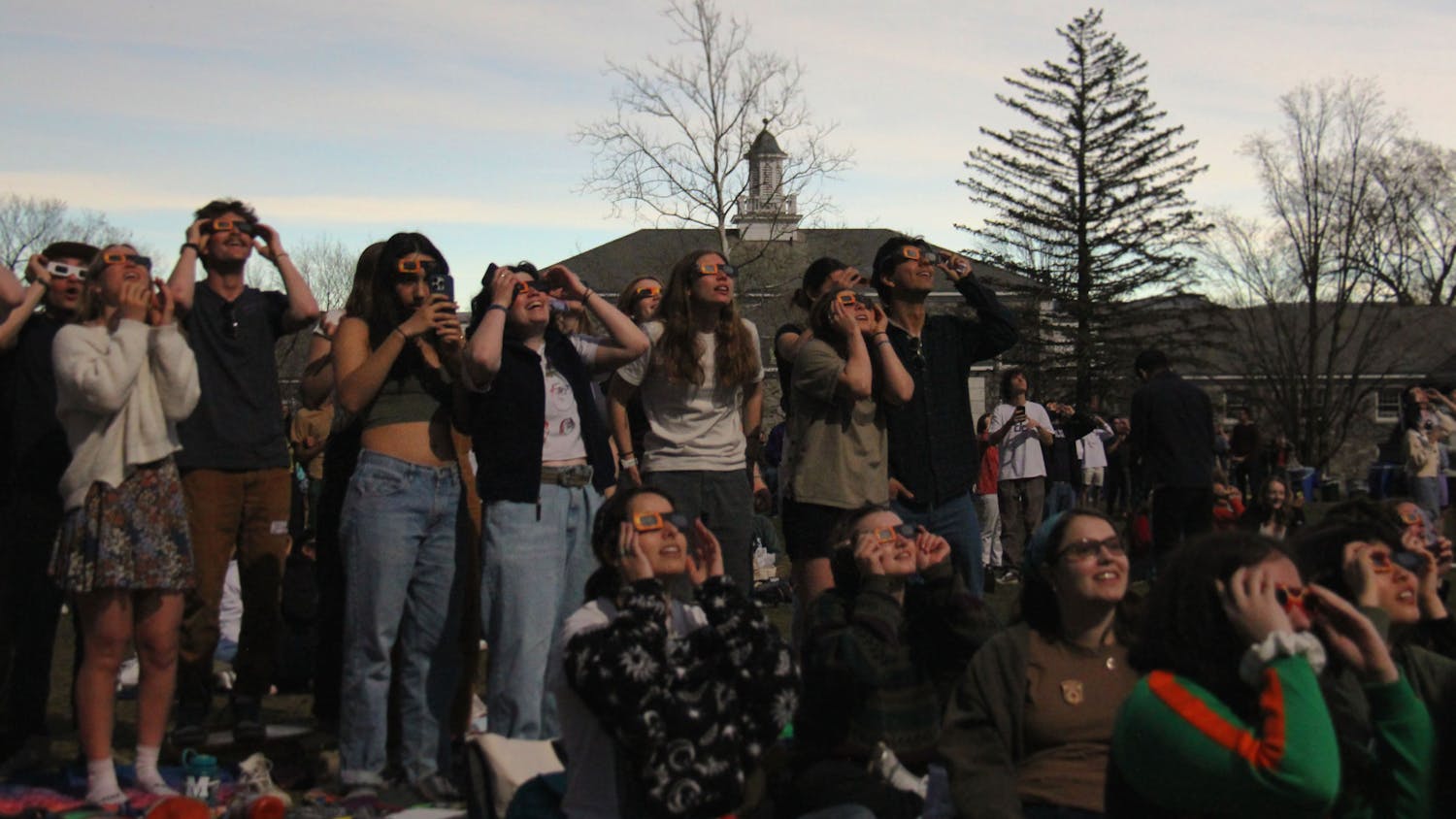The Middlebury Campus previously sat down with College President Ronald D. Liebowitz in the fall to discuss his time at the College. This is the second and final installment of the conversation, which took place prior to and after the announcement of Laurie L. Patton as the College’s 17th President. In this edition, Liebowitz discusses what it takes to be a successful College President, the nature of a presidential transition, and what is next for him after July 1. You can read Part One of The Exit Interview here.
Middlebury Campus (MC): Does a college president associate with other college presidents, such as at a NESCAC conference? Do you talk to them and ask about what’s working, what’s not working?
Ronald D. Liebowitz (RL): Well, yes. And no. The yes is that NESCAC, which stands for the New England Small College Athletic Conference, is what is called a “presidents’” conference, meaning presidents are the ultimate deciders on the place of varsity athletics among the 11 conference institutions. Athletics, then, brings us together three or four times a year to discuss athletics policy. I love athletics and understand the benefits that come with a good athletics program. At the same time, it would be nice if the presidents got together to discuss other issues more frequently. Generally, college presidents hold things close to themselves; we don’t share much with colleagues even though we know each other pretty well—I suspect nobody likes to project any kind of weakness in his or her institution. The only time I recall in my 10-plus years as president where my fellow presidents were a lot more open to discussing things was during the financial crisis. I remember especially the 2009-10 meetings as ones where, during our breaks and lunch, we did discuss what we were doing and how well each campus was responding to the challenges. But in general, college presidents tend not to share because I think it might project institutional weakness and we all are so competitive. Not that it’s right or productive, but…
MC: Did you have any input on the presidential search process or was it completely within the committee? Would they have been open to you saying, ‘I know a great provost or a great administrator at another college, why don’t you look at them?’
RL: No, the tradition is that sitting presidents are kept at arm’s length from presidential searches for a whole host of reasons, all good. It is interesting that in most professions the outgoing CEO, at least the ones that are in good standing, has a lot of input into who will be his or her successor. It’s not that way in the academy.
The extent of my involvement was helping to get the search committee together with faculty representation. I didn’t choose the faculty members, but worked with faculty council and the faculty at large to get those four people and it was a great group—a great mix of backgrounds, perspectives, and disciplinary expertise. I then worked with Sunder Ramaswamy at Monterey to select the staff person, Bob Cole, and the faculty member Laura Burian (both are great, too) to provide a Monterey perspective to the search. The only other thing I did in the search was to meet with the committee early on and give an overview of what I saw from my vantage point as President of where the institution is now, what issues and challenges are ahead, and what the committee ought to know as they started engaging in the process of finding the 17th president of the College.
MC: Time for a little advice for your successor — if the next President of the College asked you, ‘How do I keep my finger on the pulse of what students are thinking about?’ what would you say?
RL: Try to be as active in the community as possible. Pop into Proctor, Atwater, and Ross. I have found students to be very welcoming. When I find an open seat and sit down with students, always uninvited, I’ve found them to be very receptive to conversation—I’ve never been told to leave(!). We’ve been fortunate to have some great SGA leaders, at least in my time as President, and I think keeping an open communication with the head of SGA is very valuable and is something worthwhile.
I would just try to stay as involved as feels natural and manage to your personality and to your strengths. Don’t try to be something you’re not.
MC: How to work effectively with faculty?
RL: Well, there’s a natural tendency for faculty and administrators to have some tension, and healthy tension is good. But as I mentioned earlier, the perspectives of an administrator or a president and a faculty member don’t always align. A president has a certain set of time horizons and considerations that differ from those of faculty. It can therefore look like a president is sacrificing the present for the future by holding the longer-term perspective, and so the challenge is articulating your position when it differs from the sense of the faculty and hope your colleagues understand your position.
It’s hard for me as an individual to say what the next person should do. As I said, for good or bad, I’ve had a relationship with our faculty for more than three decades. A new person won’t have that history. The new president is going to have a completely clean slate, which I think can be a real benefit.
Anyone coming into this job is going to have great experience in administration already and so I think they will have a good sense of how to work with faculty. However, a challenge for all new presidents is how to understand the culture of one’s new institution. That’s where I think the four faculty on the search committee come into play. Those faculty are going to have a stake in the new president’s success and they will do the institution well by helping the new president understand and navigate through some of the idiosyncrasies of our campus.
MC: How to maintain a good relationship with the town of Middlebury?
RL: That takes a lot of work and it depends on your partner—in our case, the chair of the town’s select board. Many college towns are fraught with contradictions, especially in rural America. In small, rural places the perceptions about a billion-dollar-endowed institution can be unfair and the institution misunderstood. Consequently, there’s a great natural tension between what appears to be a privileged, entitled student body and college on the one hand, and the town on the other. It took me a while as president to learn that that old adage, “you’re damned if you do and damned if you don’t” applies quite well to the College’s involvement in town affairs. If you sit on the sidelines people think you’re aloof, you don’t care about the town, that you have all this wealth and yet you are doing nothing to help your community. And then if you do get involved, you’re accused of throwing your weight around. So, at times it seems you can’t win, at least not with everyone.
I came to the conclusion early on in my presidency that it’s better to be damned for doing than for not doing. I’d much rather get involved because I believe strongly that what’s good for the College is good for the town, and vice versa. The College benefits by the town being vibrant and healthy and the town benefits from an engaged College.
_____________________________________________________________________________
MC: The student reaction to Dr. Laurie L. Patton’s announcement as the next College President was overwhelmingly positive. Did you hear a similar reaction from alumni and other members of the Middlebury community?
RL: Yes. In every case. Last week, Jessica and I hosted a large reception in San Francisco and had smaller dinner events and in all cases our alumni were very excited about Laurie’s appointment. Similarly, Laurie and I were in New York two days ago, where I introduced her to a number of foundations and donors who have supported the College in the past. The meetings were excellent with substantive discussions about Middlebury—past, present, and future.
MC: What is the transition like between College Presidents? Is there a structure to the way administrative best practices for leading the College are communicated?
RL: Transitions are sometimes tricky and require both attention and a lot of thought on the part of the Board of Trustees, the incoming president, and the outgoing president. Many past presidents have written on the subject, usually urging boards of trustees to take an active role in establishing clear protocols for how the incoming president engages the many constituencies of a college so as to not confuse administrators and others as to who is the decision maker! We have been so fortunate with our transition as Marna Whittington and our board have followed a well-developed plan, and Laurie and our point person on campus, Tim Spears, have followed the plan to the letter. Laurie and I have been in communication regularly, too, which helps with continuity and increases the chances of a smooth transition come July 1.
MC: Did the previous College President, John McCardell, give advice to you upon your announcement as the 16th College President?
RL: Well, the situation was different in that I was already on the faculty here for 20 years, and was vice president and provost for the last seven of those years. I’ve come to recognize, through my own experience, that the best preparation for the presidency is on-the-job-training.
MC: What are the biggest challenges facing the College as President-elect Laurie L. Patton assumes this role?
RL: The issues that all college presidents now face: the increasing cost of higher education and what that means for access; keeping a liberal arts education relevant for the students Middlebury wishes to matriculate; and managing expectations. New presidents are expected to, or hoped to be able to, come in and fix all that is perceived to be wrong at an institution. One must remember, however, there are nine major constituencies that have a stake in any one decision a college takes, and it is rare that positions on a major issue aligns with all nine. Or that all see the issues that need fixing to be the same ones. That means it takes a lot of time to pick the right issue(s) to address, and then to work with all the constituencies to arrive at a position, knowing it will be rare for all to agree on the solution.
MC: Is it overstating it to say that this a momentous transition in the College, with both the Dean of the College and College President departing within six months of each other?
RL: It is not an overstatement in that we have a new leader and the first woman president. That is momentous. However, that these two positions are changing within six months of each other is not likely to be all that earth-shattering. This is an incredibly resilient and strong institution. We have an engaged and talented board, which has just gone through significant governance reform, a very experienced and skilled senior administration, and a remarkable group of commons deans whose work with students and faculty often goes unheralded. And so while welcoming Laurie to Middlebury will be a momentous occasion, a change in two administrative positions should not be viewed as anything more than that: two positions changing within six months of each other.
MC: Although you have probably been asked this a lot, what is next for you when you depart the College in the summer?
RL: We have a long-awaited sabbatical next year and we will be in Boston. Jessica and I will be working on a project on graduate education we have been contemplating and discussing for a number of years. It will focus on Ph.D. programs today, asking two major questions: (1) how we can better bridge the apparent widening gap between the public and the academy through how our graduate students are educated; and (2) how can we better address the very different speed of demographic changes in the student body compared to those of the professoriate. That is, while the diversity of the student body has increased significantly over the past twenty years, partly as a result of demographic changes in the country and partly the result of a conscious effort on the part of institutions to create richer educational environments through a more diverse student body, the diversity of most faculties have not changed nearly as much. The result has created some previously unseen tensions or at least misunderstandings and challenges in the classroom. Part of the increased tension is due to the pedagogies that our students entering college today have experienced during their K-12 years (hybrid learning with far more technology, interactive learning, collaborative learning), which they often do not see in most liberal arts classrooms, and part is due to the cultural divide between the more rapidly changing demographics of the student body relative to their faculties.




